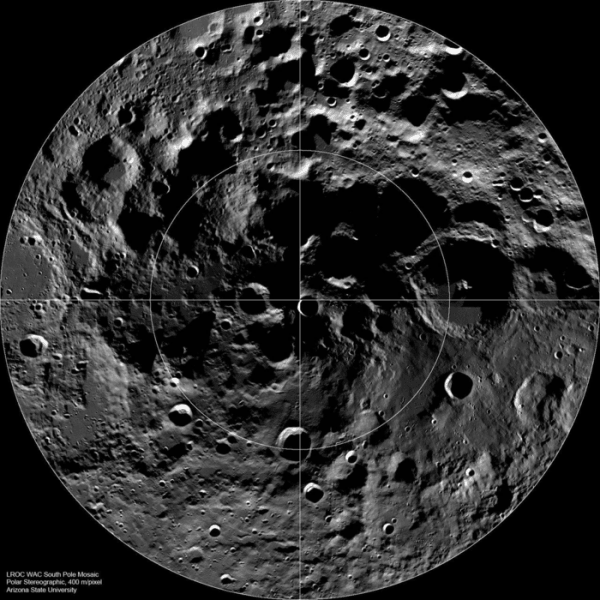After decades of uncertainty, researchers have confirmed the existence of lunar carbon dioxide cold traps that could potentially contain solid carbon dioxide. The discovery will likely have a major influence in shaping future lunar missions and could impact the feasibility of a sustained robot or human presence on the moon.
In the permanently shadowed regions at the poles of our moon, temperatures dip below those in the coldest areas of Pluto, allowing for carbon dioxide cold traps. In these cold traps, carbon dioxide molecules could freeze and remain in solid form even during peak temperatures in the lunar summer.
Future human or robot explorers could use the solid carbon dioxide in these cold traps to produce fuel or materials for longer lunar stays. The carbon dioxide and other potential volatile organics could also help scientists better understand the origin of water and other elements on the moon.
Although cold traps have been predicted by planetary scientists for years, this new study is the first to firmly establish and map the presence of carbon dioxide cold traps. To find the coldest spots on the moon’s surface, researchers analyzed 11 years of temperature data from the Diviner Lunar Radiometer Experiment, an instrument flying aboard NASA’s Lunar Reconnaissance Orbiter.
Read more at American Geophysical Union
Image: A view of the lunar south pole, where newly confirmed carbon dioxide cold traps are located, according to new research in Geophysical Research Letters. Future missions on the Moon may target this region to find out more about the resources that may exist there. (Credit: NASA/GSFC/Arizona State University)


